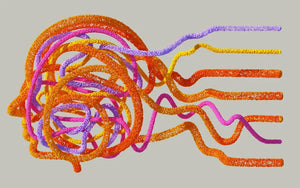As many of us know, there are two types of search ads in Google Ads: responsive search ads and expanded text ads. And, if you’ve been staying on top of the latest industry changes, you’re probably also well aware that as of June 30, 2022, we can no longer create or edit expanded text ads - so expanded text ads are no more!
That’s why this week, we’re digging into the benefits of RSAs (responsive search ads) and looking more closely at how to optimize them to get the best possible results. Keep reading!
How do RSAs work?
According to Google, responsive search ads let you create an ad that adapts to show more relevant messages to your customers. RSAs allow for multiple headlines and descriptions: up to 15 headlines and 4 descriptions.
With the help of machine learning, RSAs adapt to different device sizes to show more text and more relevant messages, resulting in up to 10% more clicks and conversions. Over time, Google Ads automatically tests different combinations in order to learn which combinations perform best, and deliver the right message to the right person.

RSA Pros & Cons
Let’s discuss some of the upsides and downsides of responsive search ads.
|
RSAs Pros:
|
|
RSAs Cons:
|
Note: you can always estimate the potential performance of your RSAs by looking at the “Ad Strength”, but keep in mind that this metric varies from “Incomplete” to “Excellent”, and doesn’t offer enough to data to properly assess the quality, relevance, and potential effectiveness of your RSAs. Once your ads get some performance data back, you can estimate the specific ad asset performance by studying the asset report for RSAs.
See the image below:

An asset report like this one, allows you to compare assets within your RSA, and determine which assets are most effective, and which may be worth replacing.
It’s worth remembering that while Google doesn’t recommend doing it, RSAs allow advertisers to pin any headline or description, ensuring that the ad copy remains fixed to the position that has been specified. When pinning ad copy, it’s advisable to pin several headlines/descriptions to the same position, as unpinned headlines/descriptions won’t appear if they’re each pinned to different positions. Be mindful that ad pinning decreases an overall ad strength!
How do I create effective RSAs?
Here’s a quick list of our go-to ways to create effective RSAs:
- Create at least one RSA with 'Good' or 'Excellent' ad strength within one ad group - a maximum of 3 active RSAs are allowed.
- Remember that Google automatically tries different combinations of headlines and descriptions, so make sure that they make sense both individually and in any combination.
- Add as many relevant and unique headlines/descriptions as possible.
- Add all relevant and available ad extensions to your campaigns/ad groups.
- Include keywords in headlines/descriptions, or utilize keyword insertion and ad customizers.
- Create ad text that focuses on user benefits.
- Don’t be afraid to reuse content from existing high-performing text ads.
Conclusion
RSAs are a great tool for beginners. With Google doing the heavy lifting of creating different ad copies and testing various combinations, high ad performance is possible without having a wealth of marketing knowledge.
While a lack of meaningful insights is the main disadvantage of RSAs, we’re hopeful that in the near future, Google will provide advertisers with more meaningful insight reporting, making RSAs a win across the board.






